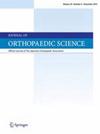日本全髋关节置换术数量的增加是否与老龄化社会有关?
IF 1.5
4区 医学
Q3 ORTHOPEDICS
引用次数: 0
摘要
背景:包括日本在内,全球全髋关节置换术(THA)的数量正在增加。日本骨科协会一直在进行关节置换手术登记,但登记中报告的全髋关节置换术数量与实际数量之间可能存在差距。本研究旨在利用日本全国健康保险索赔和特定健康检查数据库(NDB)调查日本 THA 的确切数量并评估其趋势:我们从 NDB 开放数据中下载了 2014 年至 2019 年的数据。方法:我们从 NDB 开放数据中下载了 2014 年至 2019 年的数据,提取了初级 THA 的数据,并计算了每年的数量以及每个 10 岁年龄组和性别的数量。我们还比较了老年人组和非老年人组的数量和趋势:研究期间,THA 的数量增加了约 20,000 例,呈持续上升趋势。除 2014 年和 2019 年外,60 多岁的患者接受 THAs 的人数最多。2014 年和 2019 年按年龄组进行的人数比较显示,90 多岁的患者人数有所增加(增加了 2.05 倍)。老年患者的数量明显增加(P 结论:老年患者的数量明显增加:尽管人口减少,但 2014 年至 2019 年日本的 THAs 数量却大幅增加。日本老年患者接受 THAs 的数量明显增加,这可能与老龄化社会有关。NDB 数据对日本的流行病学研究具有很高的价值,因为它可以及早发现 THA 期间出现的问题,促进其迅速融入日常临床实践。本文章由计算机程序翻译,如有差异,请以英文原文为准。
Is the increase in the number of total hip arthroplasties in Japan due to an aging society?
Background
The number of total hip arthroplasty (THA) is increasing globally, including Japan. The Japanese Orthopaedic Association has been conducting a registry of joint replacement surgery, but there may be a gap between the reported numbers of THA in the registry and the actual number. This study aimed to investigate the exact number of THA and assess the trends in Japan using the National Database of Health Insurance Claims and Specific Health Checkups of Japan (NDB).
Methods
We downloaded data from 2014 to 2019 from the NDB Open Data. Data on primary THA were extracted, and we calculated the annual number and number for each 10-year age group and sex. We also compared the number and trends between elderly and non-elderly groups.
Results
During the study period, number of THAs increased by approximately 20,000, showing a continuous upward trend. The highest number of THAs were performed on patients in their 60s, except for the years 2014 and 2019. Comparison of the numbers in 2014 and 2019 by age group showed an increase in the number in patients in their 90s (by 2.05 times). There were significantly a greater number of elderly patients (P < 0.001). The number of THAs performed was higher in women than in men (P < 0.001).
Conclusion
The number of THAs in Japan increased substantially from 2014 to 2019, despite a decrease in population. Significantly higher number of THAs were performed on elderly patients in Japan, which might be due to an aging society. The NDB data is highly valuable for epidemiological research in Japan, as it might enable the early detection of issues occurring during THA, facilitating their prompt integration into daily clinical practice.
求助全文
通过发布文献求助,成功后即可免费获取论文全文。
去求助
来源期刊

Journal of Orthopaedic Science
医学-整形外科
CiteScore
3.00
自引率
0.00%
发文量
290
审稿时长
90 days
期刊介绍:
The Journal of Orthopaedic Science is the official peer-reviewed journal of the Japanese Orthopaedic Association. The journal publishes the latest researches and topical debates in all fields of clinical and experimental orthopaedics, including musculoskeletal medicine, sports medicine, locomotive syndrome, trauma, paediatrics, oncology and biomaterials, as well as basic researches.
 求助内容:
求助内容: 应助结果提醒方式:
应助结果提醒方式:


